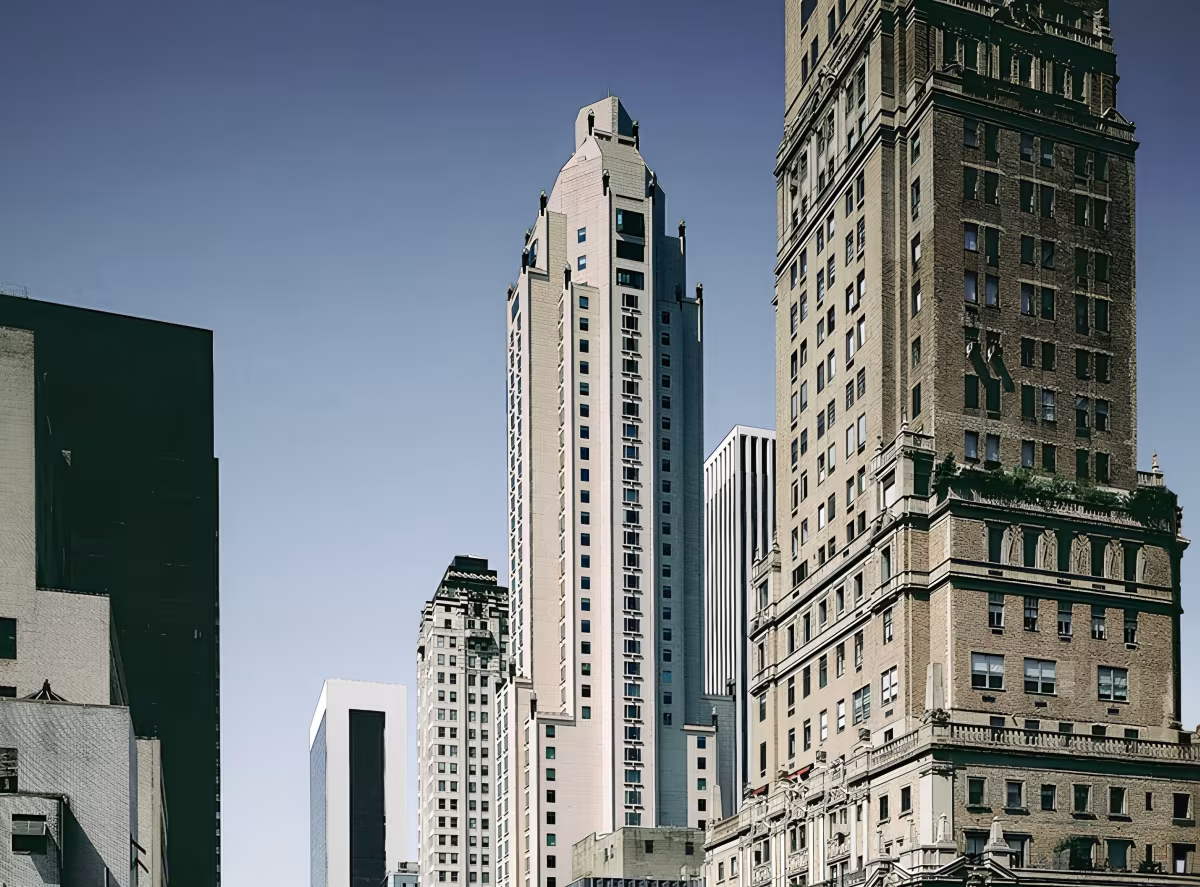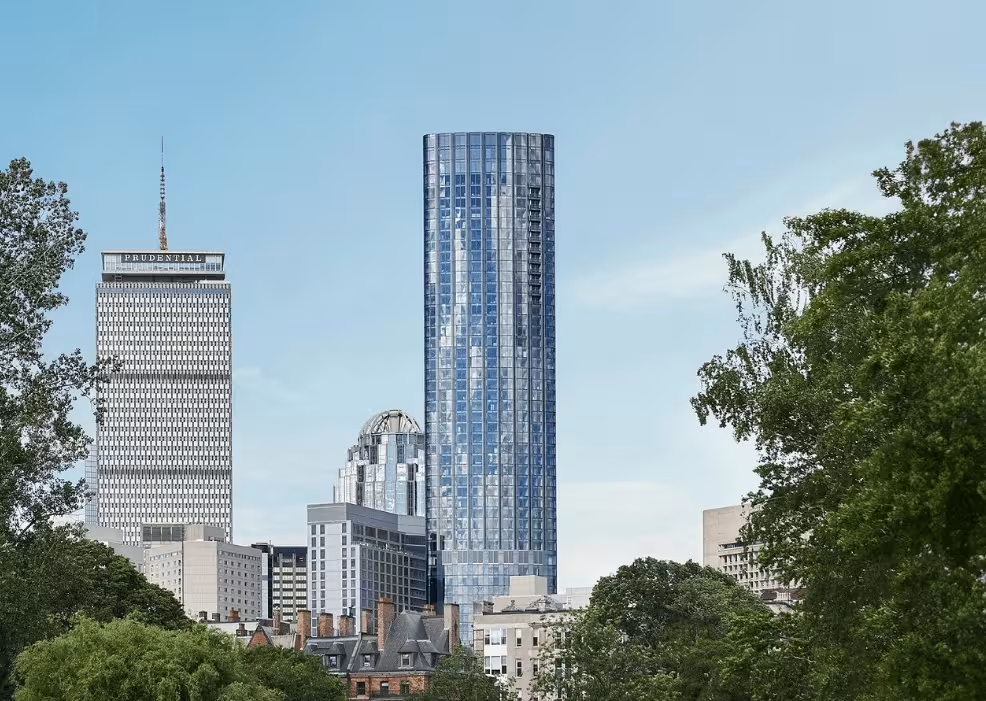Four Seasons Hotel New York vs One Dalton Building


Comparing the Four Seasons Hotel New York and the One Dalton Building is compelling because they were both designed by Pei Cobb Freed & Partners, yet they stand in different cities (New York, NY and Boston, MA), and were completed over two decades apart.
What this will allow us to see, is how the same firm's approach adapted to different places in different periods of time.
Height & Size
The One Dalton Building is clearly the larger tower of the two, both in terms of height and number of floors. It rises to 748ft (228m) with 61 floors above ground, while the Four Seasons Hotel New York reaches 682ft (208m) with 52 floors above ground.
One Dalton Building also offers more total built-up area, a total fo 706,004 sqf (65,590m2), which is about 178,573 sqf (16,590m2) more than what the Four Seasons Hotel New York offers.
Of course, each project may have faced different briefs or regulatory constraints, which we don't really know about and could also explain the outcome.
Architectural Style
The Four Seasons Hotel New York was designed in the Postmodernism style, while the One Dalton Building reflects the principles of Contemporary.
The Four Seasons Hotel New York represents a late expression of the Postmodernism, a style already in decline in 1993 when it was completed. By contrast, the One Dalton Building followed the then mainstream Contemporary, embodying the dominant architectural direction of its time.
With 26 years between them, the comparison also reflects how quickly architectural priorities can shift from one dominant language to another.
Uses
The One Dalton Building follows a mixed-use model, combining residential and hotel. In contrast, the Four Seasons Hotel New York has remained primarily hotel.
Both towers incorporate hotels as part of their program. The Four Seasons Hotel New York features a 5-star hotel with 368 rooms, while the One Dalton Building includes a 5-star hotel with 215 rooms. For more details, see the official website of the Four Seasons Hotel New York. You can also visit the official website of the One Dalton Building.
The One Dalton Building offers 160 residential units.
Structure & Facade
Both towers share the same structural solution, a Frame system.
A frame structure uses a grid of columns and beams to carry the building's loads. This frees the walls from structural duties, allowing for flexible floor plans and larger windows.
However, when it comes to the facade, both buildings use different approaches. The Four Seasons Hotel New York uses a Masonry facade, while the One Dalton Building uses a Curtain Wall facade.
A Masonry facade like the one seen in the Four Seasons Hotel New York features a heavy masonry skin that gives it a more clasical look, while a curtain-wall facade like the one seen in the One Dalton Building uses a lightweight glass curtain wall hung from the structure.
| Four Seasons Hotel New York | One Dalton Building | |
|---|---|---|
| Pei Cobb Freed & Partners | Architect | Pei Cobb Freed & Partners |
| 1988 | Design Ended | 2013 |
| 1990 | Construction Started | 2015 |
| 1993 | Year Completed | 2019 |
| Postmodernism | Architectural Style | Contemporary |
| Hotel | Current Use | Mixed |
| 52 | Floors Above Ground | 61 |
| 208 m | Height (m) | 228 m |
| 49000 | Built-up Area (m²) | 65590 |
| Frame | Structure Type | Frame |
| Concrete | Vertical Structure Material | Reinforced Concrete |
| Concrete | Horizontal Structure Material | Reinforced Concrete |
| Limeston, Glass | Main Facade Material | Glass |
| EIE Regent Av Corporation | Developer | Carpenter & Company |
| Jaros, Baum & Bolles | MEP Engineer | WSP USA |
| Rosenwasser/Grossman Consulting Engineers | Structural Engineer | WSP USA |
| M.I.Pei, Chhada, Siembieda & Partners, And Betty Garber Desing | Interior Designer | Bill Rooney Studio, CambridgeSeven, And Thierry Despont |
| NY | State | MA |
| New York | City | Boston |
| 57 East 57th Street | Address | 1 Dalton Street |